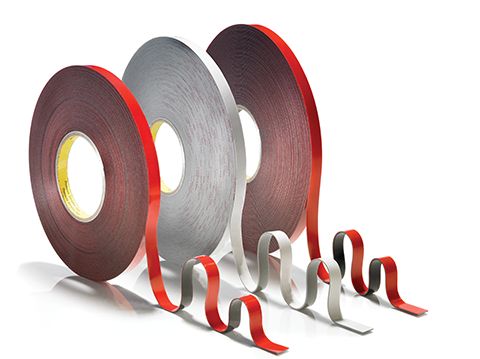By Kejian Zhang
With thousands of signs guiding people every day, their structural integrity needs to be a top priority, no matter their particular size or shape. There are many ways to achieve this integrity. Traditionally, design and production engineers have fastened parts of signs together with welds, rivets, nuts and bolts, screws and other mechanical techniques. Today, as the sign industry has adapted to work with new materials, these techniques have been joined by structural adhesives and high-strength acrylic foam tapes, which instead hold materials together by surface attachment. These options can help meet customers’ expectations for the quality of a sign’s appearance beyond the limitations of traditional assembly methods by serving as virtually ‘invisible’ fasteners.
Improving appearance and peace of mind
Since the 1980s, thousands of engineers, designers and manufacturers around the world have worked with acrylic foam tapes to create tough, long-lasting fasteners, especially for lighter alloys and composite materials where non-mechanical attachment methods are preferable. These materials have included products used in commercial building construction and the transportation market, from commercial airliners to personal vehicles.
By integrating strong and durable tapes, manufacturers have eliminated the need for millions of screws, rivets and welds, creating smoother, esthetically pleasing surfaces and improving the longevity of their products. In this sense, acrylic foam tapes have become the ideal combination of performance, durability and ease of use.
Unlike conventional foam tapes, which feature a thin adhesive film on each side of a foam core, acrylic foam tapes have adhesive all the way through. As they exhibit both viscous and elastic characteristics (and are therefore ‘viscoelastic’), the foam core absorbs energy and dissipates stress to achieve a high level of strength, dampen vibrations and maintain a durable bond over time (see Figure 1).
The seamless appearance of a sign without traditional mechanical fasteners has proven highly appealing and, indeed, is expected by many of today’s designers. By using acrylic foam tapes, their products are not just bonded for strength, but simultaneously sealed—thanks to the 100 per cent closed-cell construction of acrylic—for greater resistance to corrosion and other types of weathering.
The uniform stress distribution offered by adhesives and tapes can compensate for thermal expansion and contraction. Lighter and/or thinner materials can be used without concerns about distortion, splitting or crazing at each fastening point, as they do not damage the integrity of substrates through drilling, screwing or welding (see Figure 2). The elimination of holes reduces opportunities for rust and corrosion by sealing against environmental conditions, for example, and bi-metallic and other dissimilar materials can also be adhered with a smooth, consistent appearance. This means designers can decide exactly how they want their sign to look and which materials they will use to achieve that appearance.
Acrylic foam tapes also offer total cost savings, as there is little or no investment required for machinery and only very minimal training is needed. Tapes simplify the sign assembly process by eliminating the time-consuming labour involved in drilling, grinding, refinishing, screwing, welding and cleaning up. Further, material costs can be reduced by sourcing and incorporating the aforementioned thinner materials, rather than the thicker materials required for mechanical fasteners and welds.






